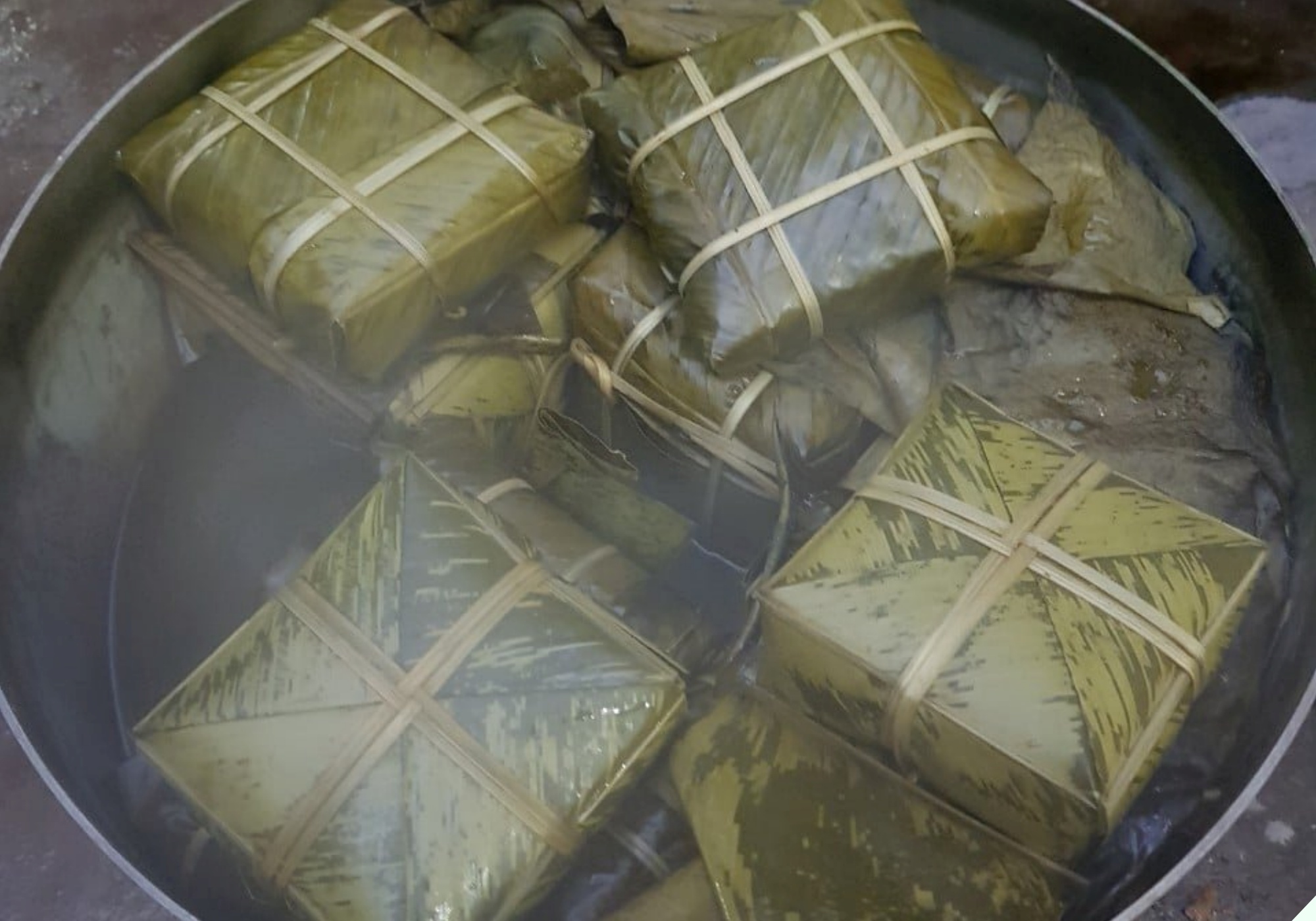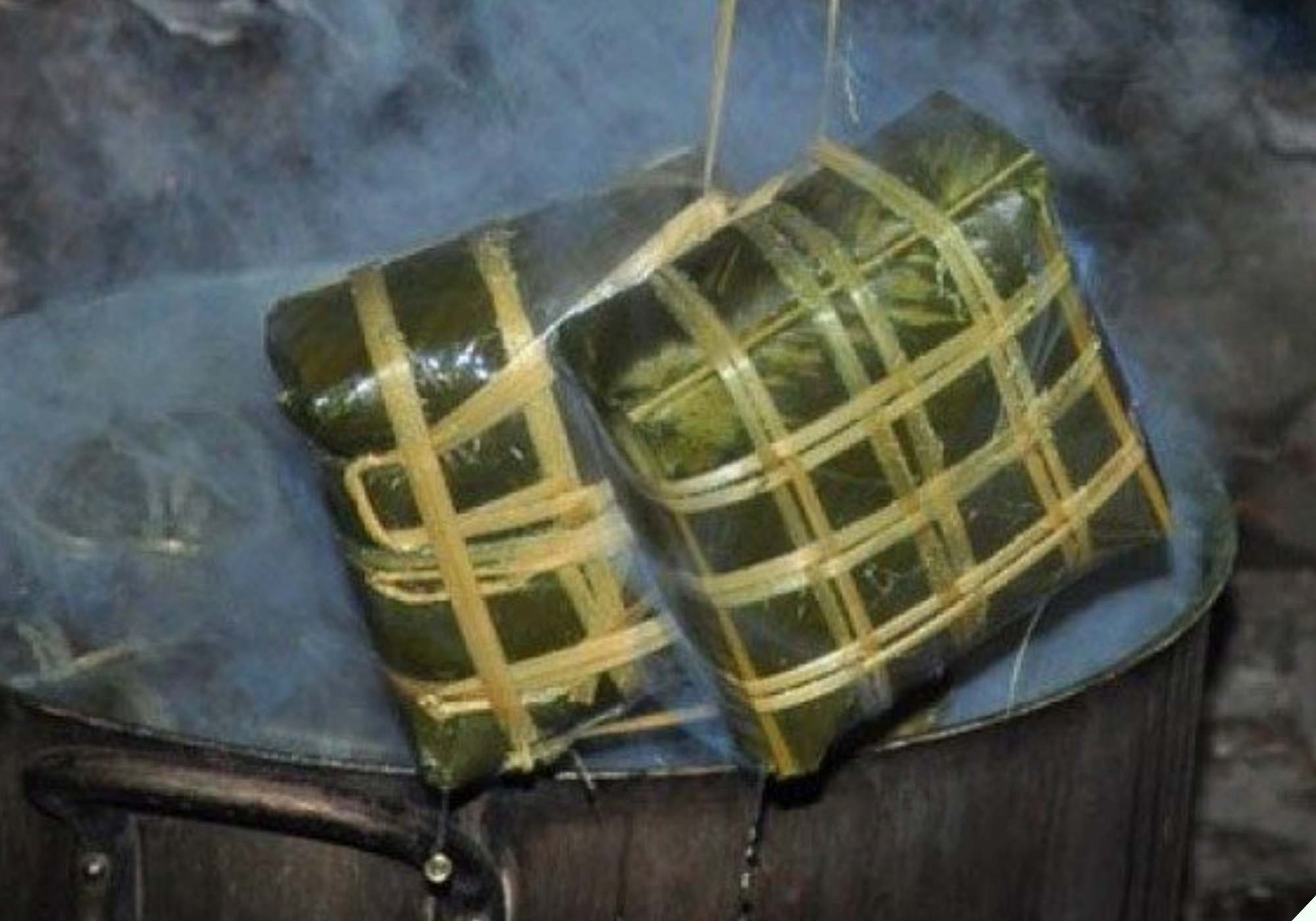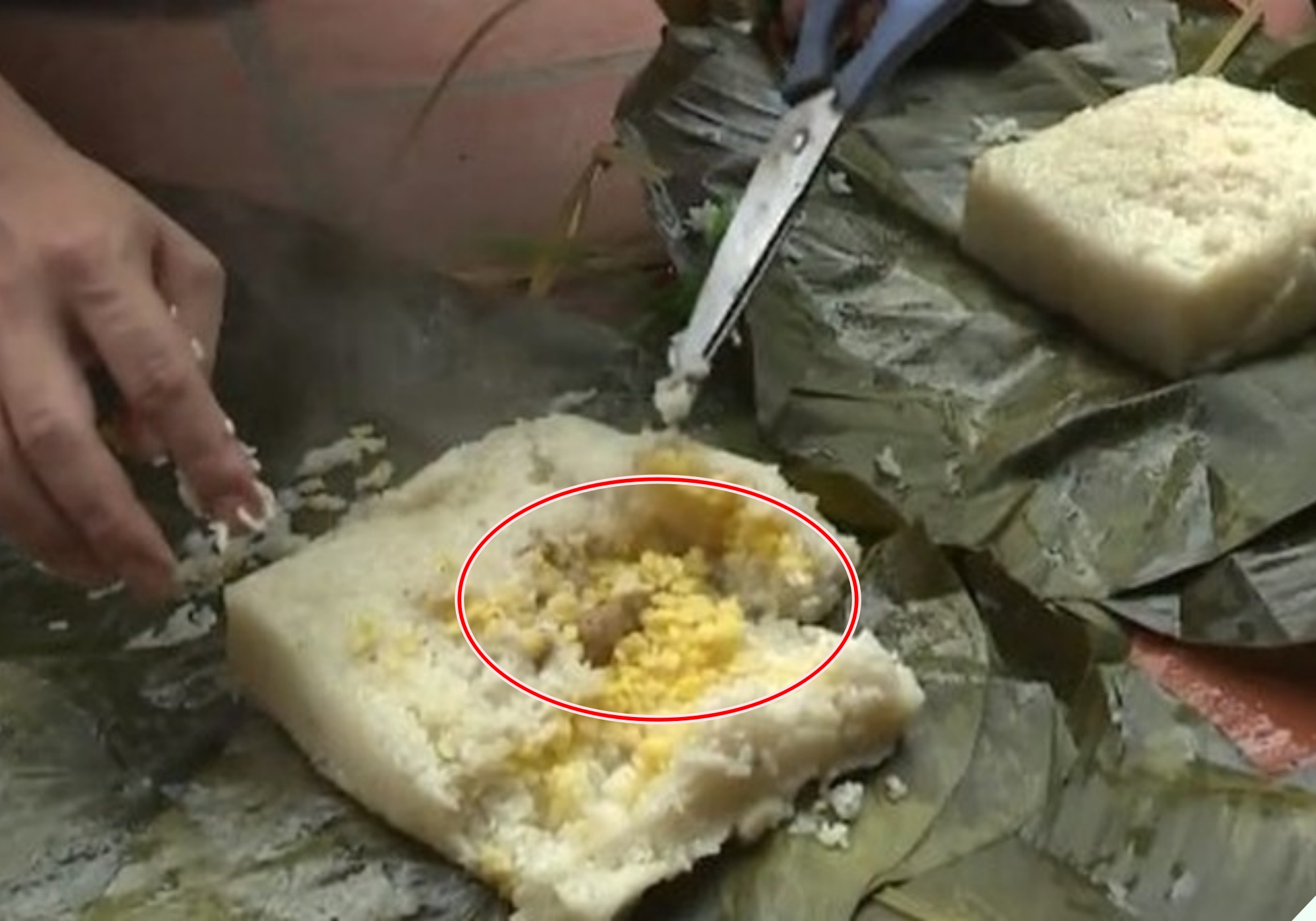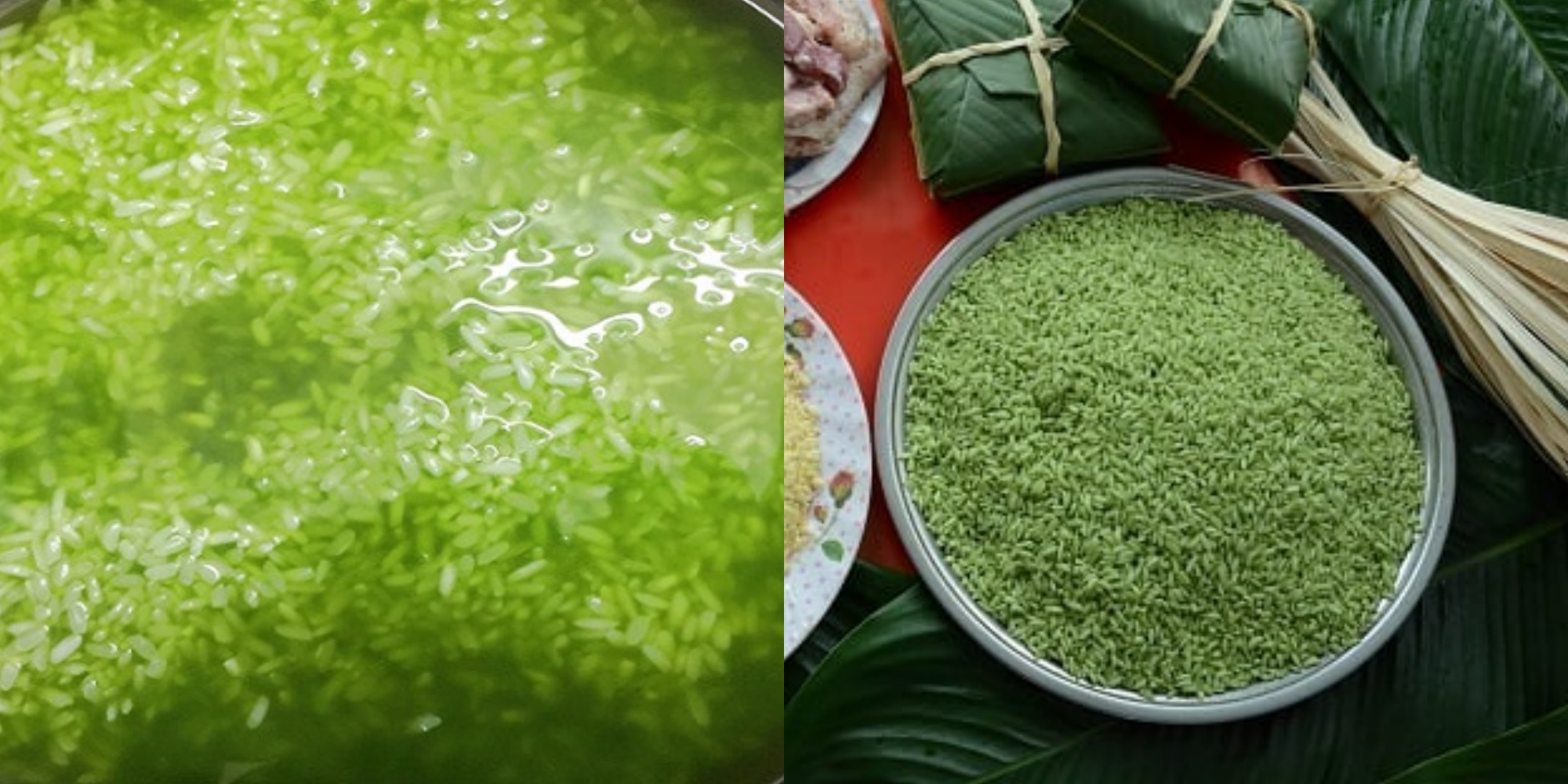
Banh chung is a traditional Vietnamese sticky rice cake, commonly enjoyed during the Lunar New Year celebrations. (Photo: Vu Ngoc)
Ready-made banh chung is a convenient option, offering perfectly square cakes with a vibrant green color, without the time-consuming process of wrapping and boiling. Moreover, these pre-made cakes are affordable, typically ranging from 50,000 VND to 200,000 VND per cake.
However, the convenience of ready-made banh chung comes with potential health risks, including the possibility of unscrupulous manufacturers adding pins into the boiling process.
According to experts, when pins are placed in the pot with the cakes, it creates an alkaline environment. As a result, the cakes take on a more appealing green color and also cook faster than they would with traditional boiling methods.

So, is it harmful to boil banh chung with pins? And how can you tell if a cake has been boiled with pins or not? Read on to discover more.
Are There Any Health Risks Associated With Boiling Banh Chung Using Pins?
While the use of pins may seem like a handy trick to achieve the desired color and reduce cooking time, they are considered a health hazard. Pins contain high levels of heavy metals such as mercury, lead, and cadmium, among others.
If these chemicals are ingested, they can pose a serious threat to one’s health, particularly affecting the brain, liver, and digestive system. Research also indicates that lead exposure can cause prenatal toxicity and even lead to miscarriages in pregnant women. Additionally, it may negatively impact fertility.
When pins are used in the boiling process, the chemicals leach into the cakes, and consuming these contaminated cakes can directly endanger one’s health.
How Can You Identify Banh Chung That Has Been Boiled With Pins?
Typically, a banh chung boiled with pins will exhibit the following characteristics:
Examine the Cake’s Leaves
When purchasing banh chung, pay close attention to the leaves. If you notice any of the following signs, it may indicate that the cake was boiled with pins, and it’s best to avoid buying it:

– Unnaturally vibrant green color: The boiling process typically takes 8-12 hours, and during this time, the dong leaves tend to turn yellowish rather than remain vibrant green.
– Presence of black spots on the surface of the cake.
– The cake feels soft and mushy when held, lacking firmness.
Inspect the Cake’s Husk
Examine the husk of the banh chung. Cakes boiled with pins will have very translucent and bright green husks, whereas traditionally boiled cakes will have a greenish-yellow hue.

Check the Filling
Using pins to boil the cakes accelerates the cooking process, which can result in overcooked or “forced-ripe” fillings. Consequently, the texture and aroma of the filling may not be as pleasant as that of a traditionally boiled cake.

In addition to the above signs, it is advisable to purchase banh chung from reputable sources to ensure both delicious and safe cakes for your health.
Tips for Boiling Banh Chung Quickly While Achieving a Vibrant Green Color
For those who prefer to make their own banh chung at home, here are some tips to speed up the boiling process and achieve that desirable green color:
– Use a tin pot to boil the cakes. This type of pot naturally creates an alkaline environment, resulting in greener cakes without the need for pins.

– Soak the glutinous rice in lye water instead of plain water to make the grains clearer and more aesthetically pleasing.
– Pound and extract the juice from wild ginger leaves, then mix it with the glutinous rice. The natural green color of the leaves will give your cakes a beautiful and appealing hue.
– To hasten the cooking process, add a little lemon juice to the glutinous rice. The acidity of the lemon juice increases alkalinity, reducing boiling time.

– Line the bottom of the pot with dong leaves to prevent the cakes from burning and to maintain their color during the boiling process.









